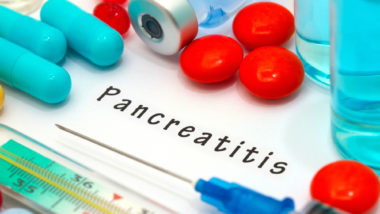 A class of drugs used to treat type-2 diabetes has been linked to flesh eating bacteria symptoms due to a condition known as Fournier’s gangrene.
A class of drugs used to treat type-2 diabetes has been linked to flesh eating bacteria symptoms due to a condition known as Fournier’s gangrene.
These prescription medications, known as “gliflozins” or SGLT-2 inhibitors, are designed to manage glucose levels by preventing the kidneys from reabsorbing excess blood sugar. This excess glucose is eliminated from the body through the urine.
Gliflozins such as the Farxiga drug (dapaglifozin), manufactured by AstraZeneca, have been associated with a number of serious side effects, of which Fournier’s gangrene, with flesh eating bacteria symptoms, is one of the latest to be identified.
What Are SGLT-2 Inhibitors?
Before getting into an explanation of how gliflozins work, it should be understood that type-1 and type-2 diabetes are actually two different conditions, although they present similar symptoms. Type-1 (“childhood onset”) diabetes is a congenital disease in which the pancreas fails to produce insulin. These people must take regular injections of insulin to manage their blood sugar levels.
Type-2 diabetes, also known as “adult onset,” is usually due to obesity, excess sugar consumption and a sedentary lifestyle. The pancreas continues to produce insulin, but cells have become “fatigued” and no longer respond (a condition known as “insulin resistance”).
The first line treatment for type-2 diabetes has been metformin, a relatively innocuous drug derived from French lilac, long used as a folk medicine. Metformin’s mechanism of action inhibits the production of glucose by the liver. When combined with a low carb diet and exercise, metformin is very effective at controlling blood sugar levels, and has few side effects.
Gliflozin drugs prevent the action of a protein known as “sodium glucose co-transporter 2” (SGLT2). This protein normally plays a significant role in the maintenance of healthy blood sugar levels by enabling the kidneys to reabsorb unused glucose and re-release it into the bloodstream. Gliflozins, such as the Farxiga drug, disable this mechanism, causing excess glucose to be excreted in the urine – thus lowering blood sugar levels.
Doctors Raised Concerns Early On
When the FDA was considering approval of the first SGLT2 inhibitor (canagliflozin) in January 2013, three prominent physicians raised concerns about adverse events that had been noted during clinical trials.
One of them, Dr. Sidney Wolfe of the consumer watchdog organization Public Citizen, pointed out that there was “no evidence of any improved clinical outcomes, contrary to an older diabetes drug such as metformin.” Even one of the FDA’s own advisors, Dr. Mat Soukop, warned of an increased risk of blood clotting and heart attacks from canagliflozin.
Nonetheless, the FDA determined that the potential benefits outweighed the risks. Approval was granted on the condition that the manufacturer keep track of adverse event reports and carry out “post-market” studies.
Since then, a number of other gliflozins, including the Farxiga drug, have been given FDA approval – and virtually all of them have been linked to serious side effects. These include blood clotting, blood acidification (ketoacidosis), bladder and urinary tract infections, kidney failure and amputations, as well as flesh eating bacteria symptoms.
Number of Diabetics With Flesh Eating Bacteria Symptoms on the Rise
Fournier’s gangrene is normally a rare condition, particularly among women; it affects approximately one in 62,500 males and one in 2.5 million females per year. Diabetes is considered one risk factor for the disease.
During a five-year period between March 2013 and May 2018, the FDA identified 12 cases of Fournier’s gangrene among diabetics being treated with SGLT2 inhibitors, like Invokamet. Seven of the victims were male and five were female; several required restorative surgery, and one died. As there are approximately 1.7 million patients who are taking gliflozin drugs, it is possible that many more cases of patients experiencing flesh eating bacteria symptoms have gone unreported.
By way of comparison, there were only six cases of Fournier’s gangrene reported over 30 years among patients taking other diabetic medications.
Attorneys and law firms are currently reaching out to those being treated for SGLT2 inhibitors who may have suffered flesh eating bacteria symptoms due to their medication.
Join a Free Diabetes Medications & Flesh-Eating Infection Lawsuit Investigation
The type-2 diabetes medications linked to the flesh-eating infection include:
- Invokana
- Invokamet/Invokamet XR
- Farxiga
- Xigduo XR
- Qtern
- Jardiance
- Glyxambi
- Synjardy/Synjardy XR
- Steglato
- Segluromet
- Steglujan
If you or a loved one took one of the type-2 diabetes medications listed above and suffered from a flesh-eating genital infection, you may qualify to join this diabetes medication lawsuit investigation. Fill out the FREE form on this page for more information.
ATTORNEY ADVERTISING
Top Class Actions is a Proud Member of the American Bar Association
LEGAL INFORMATION IS NOT LEGAL ADVICE
Top Class Actions Legal Statement
©2008 – 2026 Top Class Actions® LLC
Various Trademarks held by their respective owners
This website is not intended for viewing or usage by European Union citizens.
Get Help – It’s Free
Join a Free Diabetes Medications & Flesh-Eating Infection Lawsuit Investigation
If you qualify, an attorney will contact you to discuss the details of your potential case at no charge to you.
PLEASE NOTE: If you want to participate in this investigation, it is imperative that you reply to the law firm if they call or email you. Failing to do so may result in you not getting signed up as a client or getting you dropped as a client.
E-mail any problems with this form to:
[email protected].
Oops! We could not locate your form.












